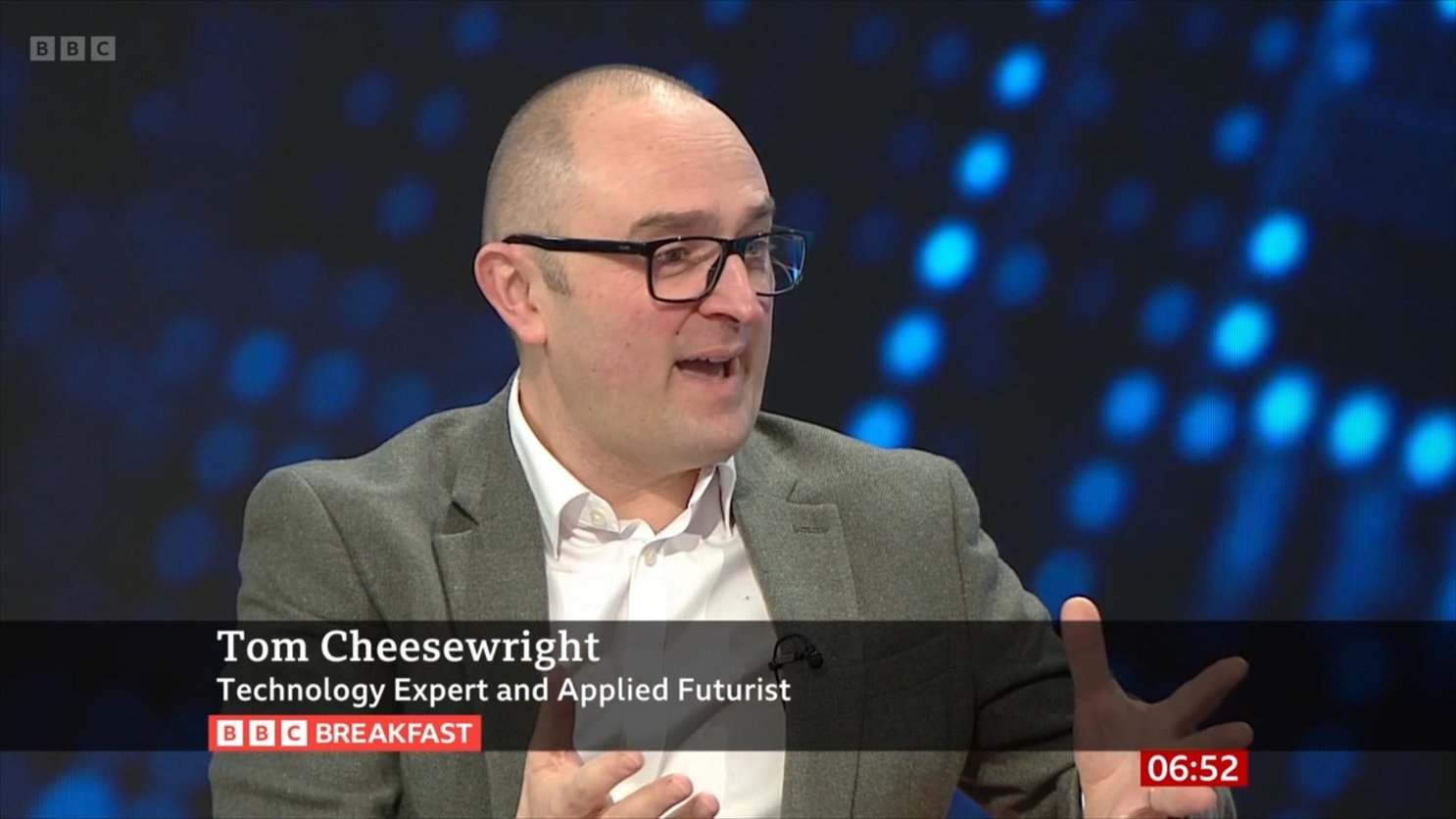Data
How to use data to future proof your business
29 August 2024 • 4 min read

Where does the opportunity in data and the AI 'gold rush' truly lie? According to Tom Cheesewright, leading applied futurist and author of "Future-Proof Your Business," it's those who provide the 'shovels' for this gold rush who are likely to profit. With a rich background in advising global brands like BP, Kellogg's and Sony, Tom specialises in translating cutting-edge ideas into actionable strategies. We sat down with him to explore more of his thoughts on how businesses can capitalise on data and AI.
We often talk about businesses being ‘future ready’, but what does that really mean?
Future-readiness requires several key traits that many organisations still struggle to demonstrate. These include the ability to effectively collect, process, and act on information. Future-ready organisations excel because they embed agility into their core operations, allowing them to not only respond to market shifts but to anticipate them. This requires a strong foundation in data-driven decision-making, where decisions are made based on rigorous analysis rather than intuition. Leaders must create a culture that prioritises continuous innovation, ensuring the company can pivot quickly when new opportunities or challenges arise.
Too many businesses continue to place too great an emphasis on gut feel over good, hard evidence.
How do we prioritise data over intuition?
A few years ago I was at a conference in Nashville and I heard a variety of plausible solutions from the presenters there. Polly LaBarre, founding member of the Fast Company team and author of the best-selling Mavericks at Work, talked about changing the culture of leadership from enforcing direction to asking questions. Her instruction was to "walk in stupid" each day.
Gary Simon, managing editor of FSN, discussed how most companies still struggle to forecast accurately and re-forecast with sufficient frequency. Worse still, they don’t give leaders the real insights from those forecasts that drive better decisions.
And Howard Dresner, former Gartner analyst and the man who coined the term ‘Business Intelligence’, talked about the companies becoming "hyper-decisive", leveraging solid data so that strategic decisions are taken rapidly, by people at all levels.
What do these solutions look like in practice? How do you ‘walk in stupid’?
The common theme running through all of these is skills. ‘Walking in stupid’ each day is about mastering your own ego and understanding what questions to ask. It’s about fostering a curious, analytical, and most importantly open, mind. Turning numbers into insight requires data manipulation and analytical skills, but also the skills of storytelling and narrative.
One of the questions I’m asked most frequently is ‘what skills do we need for the future?” To me; Polly, Howard and Gary all seem to be talking about the three Cs I laid out a decade ago: curation, creation and communication.
All of us need the skills of discovery and qualification, the ability to recognise gaps in our knowledge and understanding, source data to fill those gaps, and validate it (‘curation’). We need the ability to manipulate that information, apply it, and turn it into something of value (‘creation’). And then we have to sell our new creation to our colleagues and customers, wrapping it in a compelling story (‘communication’).
How do leaders become hyper-decisive? And why does it matter?
Dresner defined hyper-decisiveness as, “instantaneously processing vast arrays of data and information, and delivering actionable insights to a growing community of users.”
Technology is clearly part of the answer. It enables us to collect information in real-time, automate an increasing amount of its processing, and present it in a dynamic fashion. But to find real value in this, decision makers need the skills to use data-driven insights to improve the business every day and foster decisive leadership.
What role does AI play in becoming hyper-decisive?
The AI goldrush is on. A few years ago every company was touting its ‘Big Data’ credentials. Now they’re referencing AI as a cornerstone of their business. Even the most unlikely organisations are clamouring for AI expertise to help them solve complex business problems.
Data is often presented as the gold in this gold rush. But there are many other critical tools, and the makers of these stand to benefit perhaps more than those holding the data or applying the tools.
In the US, we’ve seen how AI has helped the big tech companies dominate not only the tech markets, but the entire stock market.
But power doesn’t only lie with the largest players. There are others that offer a platform for more rapidly applying models to data for predictive analytics. There are companies to whom you can outsource the ‘mining’ of gold — or perhaps a more accurate analogy might be the production of automated mining systems. Consultancies who can build AI tools for organisations to use.
Where does opportunity lie in data and AI?
We are still in the early days of artificial intelligence, making it challenging to identify the most valuable applications. However, significant opportunities exist for those who provide the tools and platforms that enable AI’s potential. One key area is AI’s ability to rapidly test and validate use cases for new concepts, allowing businesses to identify promising ideas with reduced risk.
The future of decision-making will be shaped by the ability to leverage data effectively across all levels of an organisation. Those who can seamlessly integrate AI to provide real-time, actionable insights will gain a strategic advantage, transforming data into a core asset that drives innovation and growth.
The future of decision making may lie in harnessing the power of data across entire organisations.
Join us for our upcoming webinar, "The Digital Future: The Next Decade," where Tom Cheesewright will dive deeper into these topics and share actionable insights on how your business can stay ahead in the evolving digital landscape. Secure your spot to be part of the conversation.



.png?width=564&height=348&name=Screenshot%202025-06-10%20at%2015.03.23%20(4).png)